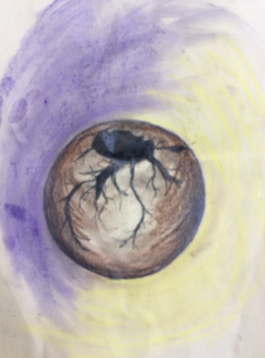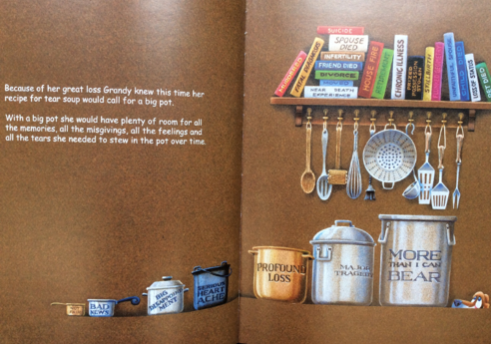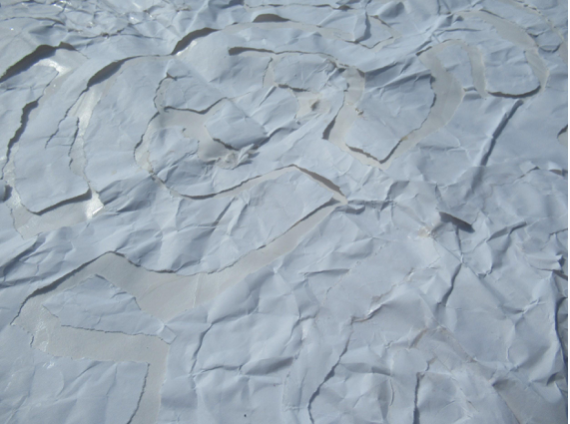The Masks We Wear
- Sharon Herriot
- Oct 8, 2019
- 5 min read

"I couldn’t do your job”
“How do you cope?”
“I don’t know how you do it”
Tell someone I am an art therapist working with those who are dying and their bereaved family members and these are often the comments I hear.
How often is my response pride? An internal voice saying ‘yes I cope where others wouldn’t’ or ‘how good am I?’ Perhaps an unhealthy response from a place of ego, ‘here I work where others fear to tread’. I also consider the more healthy aspects of my responses; understanding that I do a good job, that I have trained long and hard to be this professional person, and can know and accept my skills and abilities from a healthy place of self-esteem (something that took time, therapy and good supervision to develop).
I can accept this work isn’t for everyone, in the same way that I could never be a nurse stitching wounds, cleaning infections and emptying bed-pans I understand my work is to ‘stitch’ psychic wounds, ‘clean’ emotional trauma and ‘empty’ (or at least hold) the metaphorical excrement of the emotions raised in living and dying. This is the space in which I work best and oftentimes thrive.
I am spending more time reflecting on my internal responses, on what they hold or contain, exploring this not only in terms of self-care but also in terms of honesty, openness and being congruent for my clients. What of myself do I share and what stays hidden behind a mask of professionalism?

In some recent work in personal therapy exploring loss and toxic relationships, I have been drawn to particular conversations with my therapist, reflections between therapy sessions and image making that focussed on my own losses.
I have thought more about my experience of grief through work, losses, old and new, and of different and varied experiences of grief both public and private. Reflecting on the grief I hold and how I make sense of it.
‘The Cracked Container’
image exploring my own grief made during therapy
When use the word ‘grief’ I am thinking about it in its widest sense meaning any loss, change or bereavement and am often drawn to this image from Tear Soup1 that so neatly captures this.

Through recent years there have been many losses and changes, so where do I hold my grief? When and where do I feel it? Can it be allowed out, to be seen and shared, is acceptable in the daylight? What slips through the cracks in my mask of professionalism?
For most of us working in therapy, indeed any role that involves care and support offered to others, the tendency can be to ‘pop a brave face on’ to literally wear the mask to work that perhaps protects us from the grief we see and feel daily, but also offers a strong face to those who we hope to support.
I am drawn to Jung’s idea of the Persona "a kind of mask, designed on the one hand to make a definite impression upon others, and on the other to conceal the true nature of the individual"
There seems an unfounded distinction between ‘them and us’, an imbalance created in so many support services; them - who don’t cope, who need help and us - who cope and give help. We’re back to that place of ego ‘yes I do cope with my job, how good am I?’, but perhaps also a place of ‘I am unable to be vulnerable, injured or affected’ within my professional role.
This false dichotomy of them and us is unhelpful and loaded with privilege, power and unconscious messages of stigma. We ask clients to be open about feelings whilst we hide ours. Do we sit in the rarefied air of the mentally unassailable, remaining unaffected by those pesky emotions? I wonder what unconscious messages we give to those who come to us for support.
I absolutely understand that we need to be there for our clients and remain professional on some level. If, on visiting my therapist, I had found them sobbing over their own personal travails my faith in their ability to support me would have been shaken. I want my therapist to be equipped, calm, thoughtful, but also human. So how can we strike this vital balance? I want to be that calm and competent professional, but also acknowledge my own feelings and vulnerabilities.
As an art psychotherapist the place I have begun my exploration is in image making. looking around my grief, giving this most hidden of emotions a good airing and welcoming it into my daily experience.

'Torn’ image exploring my own grief - external landscape.
There is a beautiful children’s book about death called ‘Cry, Heart, But Never Break’ by Glenn Ringtved where death, on visiting the house of a woman about to die, takes the time to sit around the kitchen table drinking coffee with the woman’s grandchildren. When I first read it I was struck by the ordinary domesticity of this scene. Death making themselves comfortable, taking time to talk and answer the children’s questions, being so much a part of life “What would life be worth if there were no death? Who would enjoy the sun if it never rained? Who would yearn for the day if there were no night?”.
If I can sit at my table and befriend my grief, know it and accept it as a beautiful part of life then perhaps I enter those spaces with clients in a more congruent way. I still aim to be the calm and competent professional that my clients need me to be, but perhaps a little unmasked, a little more present and open to sitting and sharing a cuppa with my grief.
The next Potting Shed weekend event focuses on death and grief.
Till Death Do Us Art; a creative exploration of loss and grief. For more info and booking Head to the Counsellors Café Events listing HERE
Author's Bio
Sharon Herriot worked as an Art Psychotherapist for many years with children affected by domestic abuse and bereavement. She has run groups for CAMHS (child and adolescent mental health services) for teenagers with depression, anxiety and who are exhibiting self-harming behaviours.
Currently she works for Ashgate Hospicecare in Derbyshire with patients and their families; She also works for Catharsis Creative Arts Therapy.
Sharon is co-founder of The Potting Shed with her colleague Bethan Baëz-Devine, running CPD Events and Creative Retreats in Derbyshire.
You can make contact with Sharon and Bethan via Facebook
References:
Schwiebert, P., DeKlyen, C., & Bills, T. (1999). Tear soup: A recipe for healing after loss. Portland, Or: Grief Watch.
C. G. Jung, Two Essays on Analytical Psychology (1953) London p. 190
Ringtved, G (2016). Cry Heart, but Never Break. Enchanted Lion Books, NY













